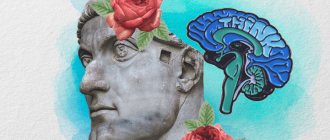.
Can you imagine any celebration without balloons? So bright and colorful, they instantly create a festive atmosphere, but for some people, such seemingly harmless objects become the cause of their fears. What is the name of the phobia and is it possible to fight it?
Globophobia - fear of balloons
Causes of fear
Depending on the type of fear, the reasons for its occurrence are divided. They are united by one circumstance. The disease occurs in childhood. It is not surprising, because it is in childhood that our psyche is most vulnerable. There are cases where the phobia was a consequence of stress experienced at a conscious age. So what can cause globophobia?
During the process of inflation, balloons tend to burst, producing a sharp and unpleasant sound that provokes severe fear in a person, which has every chance of developing into an illness. If such cases are repeated, then on a subconscious level we mark the balls as a potentially dangerous object.
The noise created by the popping balloon can remind a person of unpleasant and stressful situations from his past. People who have survived military operations often suffer from this disease. They, without realizing it, draw an analogy between explosions and a harmless ball.
The fear that the balloon will burst is very great
Often, fireworks or a bottle of champagne can also cause panic in such people.
Another property of balls is to fly away. Having once lost a beautiful toy, the patient is afraid to again experience the feeling of losing something valuable. This feeling develops into a fear of balls in general.
Solution
The sooner you start fighting the disorder, the easier it is to achieve the desired result. If a child is afraid of a bursting balloon, then you should gradually instill in him trust and love for the toy. You can suggest making balls from plasticine or drawing them on paper.
Try to avoid such a problem: if a balloon bursts next to your child, be sincerely surprised and laugh, then the child will perceive the incident as a game. Children copy their parents' behavior, so don't focus on fear.
It is more difficult to cure an adult from a phobia. The main emphasis to solve the problem is on contact with the irritant. The patient himself must recognize the pettiness of his fear and let it go.
The treatment method is that a person must let go of his fear. To do this, take a bunch of balloons and release them into the sky, symbolizing parting with the phobia.
You can be brave and pop the balloon with a needle. Don't close your eyes, seeing the mechanism in action will make it easier for you to perceive what is happening.
To treat a phobia, an adult needs contact with balls
Existing methods
After consulting a psychotherapist or neurologist, you may be prescribed medication. Sedatives in combination with sports and meditation have a positive effect. The cognitive method of therapy allows the patient to independently solve the problem with globophobia. The treatment is carried out in sessions: the person is mentally sent to a situation where he experienced an incident that led to fear.
Another method of therapy is to put the patient into a hypnotic state. This technique is considered the most productive and allows you to identify and eradicate the problem in just a few sessions.
Symptoms of the disease
Any fear is a phobia, which means that when you see your fear, a person experiences discomfort and sometimes panic attacks. When globophobes see balloons:
- heart rate increases;
- dizzy;
- increased sweating is noted;
- aches bones;
- nausea appears;
- dilated pupils;
- limbs tremble.
Agree, not the most pleasant feeling. If you do not fight this disease, any holiday can turn into a real nightmare, because some people panic just from the sight of balloons.
Cold sweat as one of the signs of globophobia
Symptoms
It is very easy to recognize a person who suffers from a fear of balls. The symptoms of such disorders are pronounced. People are terrified of balls and everything connected with them. People with such psychological disorders may experience the following problems with the body when they see the object of fear:
- tachycardia;
- heavy sweating;
- chills;
- stiffness in movements;
- dizziness or fainting.
There is also an irresistible desire to hide away from the object of your fear. People try to suppress such desires, but there are times when they behave inappropriately:
- close in on themselves;
- sit on the floor and begin to sway from side to side;
- hiding;
- Cover your ears with your hands.
Such symptoms require urgent consultation with a specialist.
Treatment of globophobia
Fortunately, any fear can be overcome. The main thing is to understand that phobia is a disease that needs to be treated! And also understand the cause of your illness. If you have a mild form of fear, then:
- rationally, analyze your fear: think about what real damage a balloon can cause;
- remember the moment when you began to be afraid: analyze it in detail, feel the emotions and experiences that you felt at that moment, you yourself will come to the conclusion that you have become a hostage to your own fantasy;
- try to get used to a frightening object: depending on the type of your phobia, you can burst a few balloons yourself or release a bunch of balloons into the sky, or better yet, do it with your friends and in a playful way, if you can control this process, the fear will recede;
- We should not forget that fear can be aggravated by fatigue and other stress: decompress your day as much as possible, take time for mental and physical relaxation, read a book, dance to your favorite song, do meditation or yoga, something that brings you positive emotions will help in the fight against your fears.
You can get rid of your fear of balloons on your own
Symptoms of Globophobia
Globophobes may experience fear not only from touching the ball, but also from seeing them and even depicting them. This disease is paroxysmal in nature.
Despite the fact that fear of balls is quite rare in people, it is not difficult to identify by the following symptoms:
- cardiopalmus;
- increased sweating;
- dizziness;
- nausea;
- dyspnea;
- fainting;
- panic;
- diarrhea;
- stiffness of movements;
- crying (in children).
Many globophobes have a desire to run away, to hide from a frightening object.
In children, perhaps the most noticeable symptom of a fear of balloons is excessive crying. When he sees it, the child tries to hide as quickly as possible from the object that frightens him. For children, the main observers who can identify symptoms of globophobia are parents. The first symptoms of a child’s fear of balls should certainly be a wake-up call for parents. Many children and adults, due to their fear of balloons, do not attend fairs, parties, and birthdays. If a child's peers know about his phobia, they often tease him. This further aggravates the course of the psychological disorder. To the question of what to do if you are afraid of balloons, the answer is clear - contact a psychotherapist.
Diagnosis of fear of balls
Many people do not attach importance to their fears, frivolously assuming that everything will go away on its own. But this mental condition requires professional treatment, and first, accordingly, diagnosis. The doctor conducts a survey of the patient, always about the duration of the attacks, and studies the patient’s symptoms. Additional tests are carried out as necessary. Treatment will be especially effective if the disease is detected at an early age, otherwise future phobia can lead to more serious illnesses, especially in people with a hereditary predisposition to mental disorders. In order to diagnose globophobia in time, you need to carefully study the patient, this will require a clinical examination.
If, during the examination, other concomitant mental disorders are discovered, in addition to the fear of balls, then the doctor may recommend a computed tomography scan of the brain. The patient is additionally questioned for the presence of hereditary diseases.
Professional help
If you cannot cope with the problem on your own, seek professional help. There are many different therapies.
Hypnosis
By disconnecting from the outside world, it is much easier to focus on your problem, understand its cause and get rid of it.
A psychologist will help you get rid of your phobia
Group therapy
It is always easier to overcome your fears in a team if you are surrounded by people with similar problems. Either your leadership abilities will not allow you to retreat: “I want to help others by my example,” or you will be motivated by someone else’s victory over the disease: “If someone could do it, why can’t I?”
Where does this phobia come from?
Having once appeared at an early age, the fear of balls may not subside over the years. On the contrary, an adult will look ridiculous with his fears, while it is impossible to get rid of a phobia on his own.
Often the cause of the fear of balloons in children is a traumatic situation that occurs in a child who sees a balloon for the first time. A large bunch of balls may well frighten a small person.
A persistent fear associated with balloons is deposited in the child’s subconscious, which involuntarily arises if the situation repeats. This is also associated with the possibility of losing an air friend, who is so easily and naturally able to fly into the sky without leaving a trace. This also often becomes an obsessive fear, first for a child, then for an adult.
Globophobes are quite rare, but such a person is easy to pick out in a crowd. At the sight of balloons or their image, a person’s face changes dramatically, he begins to sweat excessively, has a panic attack, and tries to hide so as not to see the balloon.
The dangerous thing is that parents often do not realize the seriousness of the phobia that haunts their child, and the current situation seems insignificant or funny to them. Many people believe that over time the child will outgrow his fear. But a phobia requires mandatory treatment. If this does not happen in childhood and adolescence, then a predisposition to nervous diseases makes an adult a real neurasthenic who is afraid of balloons and is embarrassed by it. A phobia is a disease, but not a whim, as parents sometimes think. This is a serious deviation from the norm, requiring the intervention of a psychologist.
Psychotherapy
Panic fear of balloons can be treated using psychotherapy methods such as hypnosis, cognitive behavioral therapy, psychoanalysis and some other areas. They are selected depending on the psychological characteristics of the patient.
The impact on consciousness under the influence of hypnosis makes it possible to find out the cause of pathological fear. But this method is not suitable for everyone. Some people do not allow interference in their psyche. Therefore, an experienced psychotherapist uses other methods for treatment.
Cognitive behavioral therapy has a therapeutic effect in a fairly short time. A person learns to independently correct negative thoughts and, accordingly, his behavior, which directly depends on these thoughts.
A psychotherapist works with negative thoughts about unexpected sounds or the loss of something precious. A person learns to react adequately to the appearance of balloons. After several sessions, a person learns to interact with the balls as if they were absolutely safe objects.
What is globophobia?
Experts decided to call the fear of balloons globophobia; the name includes the Greek word phobia, meaning fear. You can be afraid of both the sight of an object and the loud sound that occurs when its integrity is violated. Sometimes the disorder transforms into a fear of any bubbles; a person may fall into a state of panic at the sight of bottles of soda or champagne. A reaction is possible through direct contact or when looking at an image.
This feature of the psyche is manifested by strongly pronounced symptoms.
help yourself
- Try to explain your fear to yourself. An object is not as scary as the thought of it.
- Try to react positively to everything.
- Try to remember exactly when the ball scared you, then replay this situation in your memory, and gradually sort out your emotions before and after the scare.
- According to the principle of “knocks out wedge with wedge”, try to interact with the ball. First hold it deflated, then inflate it a little and deflate it. And so on up to large sizes.
- To get used to the sound of a bursting balloon, try inflating several of them, then pop them with a needle as a joke with someone. So you can gradually get used to this sound.
Author of the article: Lyudmila Leonidovna Redkina, psychologist
Causes of aerophobia
- a stressful situation that occurred in the past during an air flight (inexperienced crew, entering an area of increased turbulence, flying in difficult weather conditions);
- active coverage of plane crashes in the media;
- fear for one’s health, which is often found in people with chronic diseases;
- inability to control events yourself;
- lack of confidence in the sufficient competence of the aircraft crew;
- the presence of other mental disorders;
- some features of education and character formation;
- genetic predisposition and other causes of aerophobia.
Consequences of aerophobia
Aerophobia can be isolated or combined. Isolated disorder is uncommon. It usually develops against the background of a traumatic situation associated with air travel. Combined aerophobia is diagnosed much more often. It is one of the manifestations of anxiety disorders. In people suffering from combined aerophobia, anxious personality traits usually appear from early childhood.
The consequences of aerophobia are usually associated with the development of avoidance behavior. In this case, people begin to avoid not only air travel itself, but also any things related to it. This significantly limits their opportunities and reduces their quality of life. Due to aerophobia, they cannot fully relax and travel, and often experience difficulties with work.
Aerophobia does not cause any unpleasant consequences for health or life. Its most severe manifestation is a panic attack, which can develop during the flight. During a panic attack, the aerophobe experiences severe fear and anxiety, and also develops a number of somatic symptoms - tachycardia, headache, dizziness, rapid breathing, etc.
Reasons for appearance
The fear of a small child at the sight of a bunch of balloons, especially if one of them “decides” to burst, making a sharp and unexpected sound for the baby, may well provoke the development of the disorder.
Also, the baby could get upset if his ball simply flew into the sky or got tangled in branches or wires.
Such a situation can evoke associations with the loss of a loved one, and what child doesn’t cry after losing his toy?
Only in those cases when he did it on purpose is he able to rejoice, watching how his ball gradually rises, how the wind “throws” it from side to side.
Also, fear of balls may appear after watching horror films. For example, in the film “It,” a maniac clown killed children and always appeared with a red ball that lured the kids.
If one of the parents has been diagnosed with any kind of mental disorder, then there is a high risk of also “acquiring” something similar at the time of experiencing severe stress and psychological trauma.
In this case, we are talking about heredity and it is extremely important to monitor your condition so as not to miss the alarm bells of a more complex disease.
What does it represent?
It is more common among children and adolescents; in adults, this disorder rarely manifests itself, and then mostly in a mild form. Let’s say they won’t cry at the sight of a balloon, but if there is a need to inflate it, they will refuse. Or they will inflate with their eyes tightly closed.
Globophobia may seem like a very minor phobic disorder, but it brings a lot of trouble and difficulty to those who suffer from it.
After all, such a person is prohibited from attending weddings, birthdays and other celebrations, the attribute of which is almost always bundles of balloons.
Even in shopping centers, at the opening of a store, they are displayed at the entrance and throughout the hall. And all because they are a symbol of any holiday.
Therefore, when leaving home, a person risks experiencing a panic attack in a public place.
And this only complicates the condition, because shame for his behavior and reactions can be so toxic for him that he simply stops communicating with people. Thinking they know he's "abnormal".
After all, he has an understanding that in fact the balloon is not mortally dangerous. But he can’t do anything about his feelings. The horror and panic that arise are beyond his control.
Jessica Alba is afraid of balloons. One day her husband wanted to make a surprise and decorated his hotel room with them. But instead of the expected joy, he saw Jessica's eyes full of horror. She is a globophobe, and for some unknown reason he did not know about it.
Recommendations
If your child shows characteristic signs of globophobia, try to be patient and attentive to his experiences. Since violence, in particular, humiliation and punishment for tears, will only worsen the situation.
In addition, do not force him to pick up the ball to make sure that it is not dangerous.
They seem cute and joyful to you, but the baby perceives them completely differently. And such actions may well cause him psychological trauma.
Hysteria is a call for help, that a little man cannot cope with his body and feelings. And your task, as a parent, as an adult, is to provide him with support, and not fall into the same state.
After all, if a child got scared, cried, but got hit on the bottom and a number of other punishments for this, he will shut up so as not to irritate with his “ugly” behavior, but the problem will not disappear.
He will simply suppress his emotions, as a result of which the phobic disorder will only intensify.
So just hug him tightly at such a moment, tell him that you love him and are next to him to protect him. Remove the object of fear, or go somewhere else. This will allow him to calm down.
And, naturally, go to a child psychologist. Don't expect the problem to solve itself; this usually doesn't happen with phobias.
Symptoms of aerophobia
A person suffering from this disorder is terrified of flying. Already on the eve of the flight, he begins to get very nervous. During the flight itself, his breathing becomes ragged, his heart rate quickens, his muscles tense, and his palms become sweaty.
While on an airplane, aerophobes constantly think about a possible accident, monitor the movements of the crew members around the cabin, listen to the surrounding sounds and analyze them. They cannot relax and get distracted; they feel constant irritability and anxiety.
The mental symptoms of aerophobia are often accompanied by vegetative ones, which are expressed in the following:
- tachycardia;
- headaches localized in the temporal region;
- pale skin;
- nausea, abdominal pain;
- frequent urination;
- shiver;
- bronchospasm;
- rapid breathing;
- hyperhidrosis;
- pain in the heart area like angina pectoris.
Consultation with a psychologist
examination and treatment at home or in a clinic
rehabilitation until complete recovery we work around the clock
Call a doctor at home Leave a request and we will call you back in 1 minute
8
Or call










